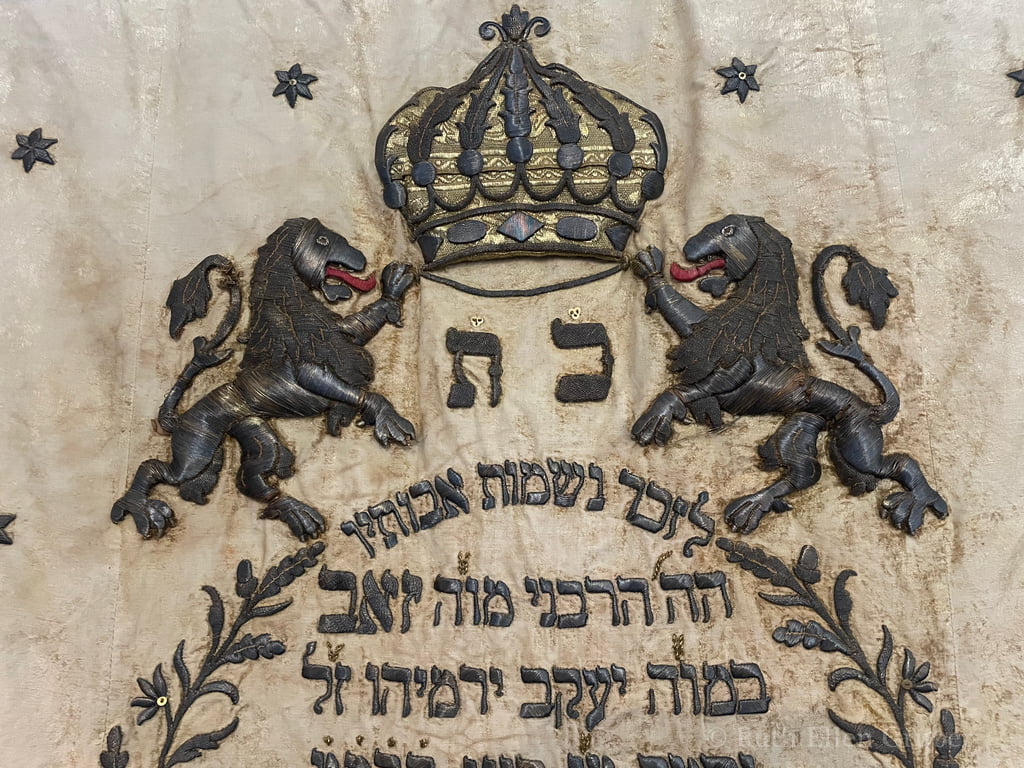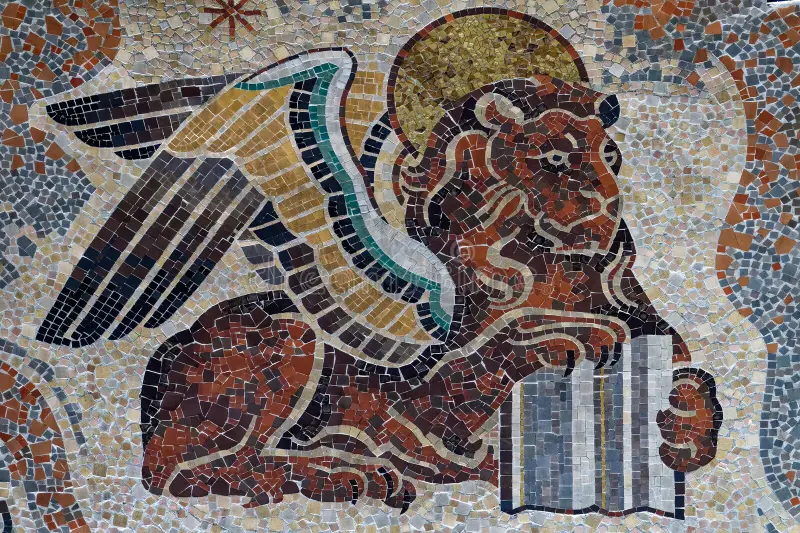Among the four creatures of the Gospels, the Lion represents Saint Mark, the voice of the Word rising into sound. Its roar is the primordial vibration, the echo of Fiat Lux made flesh. In the zodiac, Leo is fixed fire, the only sign ruled by the Sun and that is no mere coincidence. It forms part of the Tetramorph, the living chariot that bears the Divine throne, together with the Bull, the Eagle and the Angel. The same quartet surrounds the central figure of the twenty-first Arcanum, The World, where the Lion stands for the fiery principle brought to order. It is the flame that is loyal to the centre.

In the Zohar, the southern face of the celestial chariot is that of the Lion, the direction of heat and generosity. It is the fire that offers, not the one that destroys. The true Lion is the monk of fire: the one who guards the inner flame so that the world does not fade. Spiritually, it is Divine will in active repose, the golden axis that sustains the inner cosmos.
For this reason, in the zodiac wheel, the fifth house is the house of creatio and belongs to Leo. It is the point where strength becomes form and life turns into Work. In the Christian tradition, the Lion reappears as the Lion of Judah, symbol of messianic royalty. Christ, heir of the House of David, is the incarnate Sun that reorders the world. The royalty Leo expresses surpasses earthly dominion, becoming the sovereignty of Spirit over the chaos of the psyche. It is the heart becoming a throne.
This same lineage of sacred royalty extends beyond Israel, uniting East and Africa in a single flame. The Lion of Ethiopia – also called the Lion of Judah – became the sigil of that Divine covenant, the unbroken alliance between God and the throne of Zion. It appears in Ethiopian banners, seals, coins, and illuminated manuscripts as a crowned lion, bearing the sceptre and the cross: the crowned Lion of Davidian line, bearer of the messianic light of Christ.
In the Ethiopian Church (Tewahedo), the Lion of Judah also represents Christ as King and Conqueror of Death, the One who “prevailed to open the book and to loose its seven seals” (Revelation 5:5). It is the victorious Christ, but also the solar Christ, identified with the fire that gives life and with the wisdom that reigns. Through this image, the leonine power finds its final transfiguration.
II. The Lion of Safed and the Mystery of Restoration
Centuries later, in Safed, Galilee, another Lion arose: Isaac Luria, called Ari from the Hebrew Aryeh (אַרְיֵה), meaning “Lion.” The word comes from the triliteral root ʾ-r-h (ארה), “to seize, to snatch, to take hold of.” It evokes the image of a force that captures and contains rather than destroys; a strength that knows how to grasp power without being devoured by it. In the Scriptures, a variant form lavi (לָבִיא) appears in Genesis 49:9 — gur ariyeh Yehudah, “Judah is a young lion,” the line that gives rise to the messianic title Lion of Judah. Gur means “whelp” or “son,” so gur ariyeh is literally “son of the lion,” the heir of royal fire.

In Latin, leo (from Greek λέων, ultimately from the Proto-Indo-European root leu-, “to be strong, to free”) carries another resonance: the fiery power that cleanses. The verb luere means “to wash, to redeem, to release from debt.” The Hebrew Aryeh contains the force that holds the flame, whilst the Latin Leo releases it as light. One gathers and the other redeems. Together they form the full image of the Sacred Lion: the heart that masters its own fire in order to illuminate and restore the world.
Luria himself was known as ha-Ari ha-Kadosh, “the Holy Lion,” a title read both as a Sacred epithet and as an acronym for Ashkenazi Rabbi Isaac. The name conceals a double sense: the sage as the spiritual Lion, keeper of the fire of Tikkun. He saw the cosmos as a drama of fragments and taught that the task of humanity is to gather the lost sparks and restore Divine harmony, bringing dispersion back into unity. Creative force, purified, ceases to be an impulse of separation and returns as an instrument of reintegration, called Tikkun.
In Luria’s Lion, will no longer creates out of vanity; it creates out of love. It partakes in the solar energy of Christ, though expressed in Kabbalistic language: the same word of light striving to rebuild the world. The steady fire of Leo, once consecrated, is the heart that gathers and reorders.
III. The Modern Profanation of the Symbol
Unable to bear the majesty of the symbol, modernity has turned it into a logo. The Lion that once roared in cathedrals and Sacred banners now sells automobiles. Even the emblems of football clubs, once the heraldry of collective pride, have been devoured by the commercial machine. The Lion now stands petrified on shirts that contain somber gambling platforms and corporate sponsors, its mane trimmed by marketing departments.
A blatant representation of the modern ego, mimicking the Sun but does not serving it; it seeks to shine without radiating, to generate without loving. It is the Demiurge without the Father, the creature that manufactures instead of creating. It is no coincidence that head of the Demiurge, in its most well-known representation, is the head of a lion – hence estranged from the Source.

In ancient heraldry, the rampant Lion always ascended, like the soul in its climb. Today it leans toward consumption, tamed by advertising. The symbol, once a word, has become noise. It mirrors the same motion shown in the Mutus Liber: the lion devouring the Sun, matter swallowing Spirit. Without alchemy, that act is tragic.
Re-sacralising the Lion is to restore its solar axis. We ought to remember that strength is not violence and that power is not domination. The true Lion is the guardian of the centre, the monk of the Sun, the steadfast heart that keeps the world from falling apart.
Κύριε ελέησον
